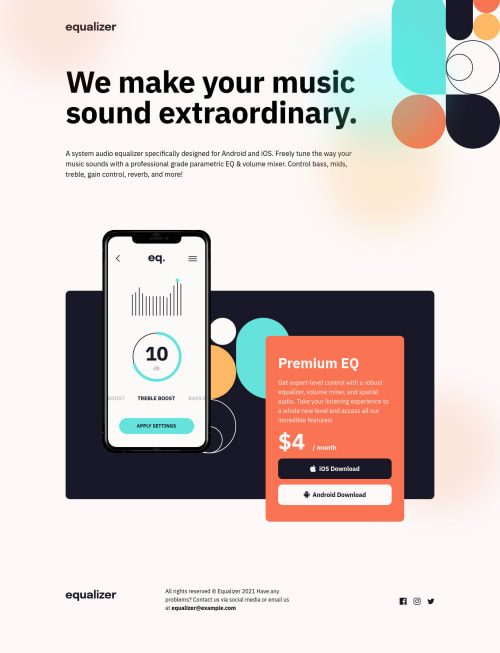Equalizer Landing Page using SASS

Solution retrospective
Hey everyone! This is my solution to the Equalizer landing page 📱
Project Details
I'm still not as comfortable as I'd like to be when it comes to using accessible units in different use cases. 🔍
I also believe that I used an unnecessary amount of nesting for the app buttons, but I'm not entirely sure. 🪺
I look forward to improving my CSS, and am actively playing a role in strengthening my foundation. 🎨
Have also noticed an odd scroll container on Safari only. 📜
I've taken some time to start picking up React & Styled Components. It's something I'm very excited to play around with in the future.
Feel free to leave comments on how I can improve my code.
Thanks! 😎
Please log in to post a comment
Log in with GitHubCommunity feedback
No feedback yet. Be the first to give feedback on Jack Shelton's solution.
Join our Discord community
Join thousands of Frontend Mentor community members taking the challenges, sharing resources, helping each other, and chatting about all things front-end!
Join our Discord